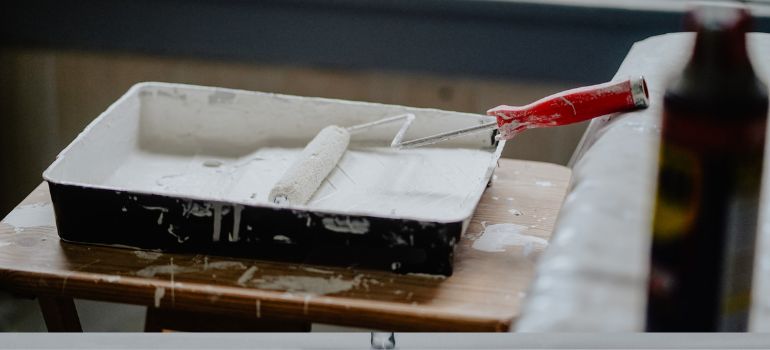In the world of interior design, the choice between a smooth or textured wall can significantly impact the overall aesthetic and feel of your living space. Each option comes with its own set of advantages and considerations, making the decision a crucial part of the design process. Let’s delve into the nuances of smooth walls and textured finishes to help you make an informed choice for your home.
The Appeal of Smooth Walls
The Sleek Aesthetic
Smooth walls offer a sleek and modern aesthetic that complements contemporary interior design. The clean lines and polished surface create a timeless look, providing the perfect backdrop for various decorating styles. Whether you prefer minimalist decor or vibrant, eclectic furnishings, a smooth wall acts as a versatile canvas.
Easy Maintenance
One of the notable advantages of smooth walls lies in their ease of maintenance. Cleaning is a breeze, and any scuff marks or stains can be effortlessly wiped away. This makes smooth walls an excellent choice for high-traffic areas and homes with children or pets, where the occasional mess is inevitable.
Embracing Texture in Interior Design
Adding Depth and Character
Texture, on the other hand, introduces depth and character to a room. It’s a fantastic way to create visual interest without relying on intricate patterns or bold colors. Textured walls can evoke a sense of warmth and coziness, making them particularly appealing in bedrooms, living rooms, and other spaces where comfort is key.
Concealing Imperfections
One of the practical benefits of textured walls is their ability to conceal imperfections. If your walls have minor flaws or uneven surfaces, opting for a textured finish can be a clever solution. The texture distracts the eye, camouflaging any blemishes and creating a more forgiving appearance.
Factors to Consider
Room Size and Lighting
When deciding between smooth and textured walls, consider the size of the room and the available lighting. Smooth walls tend to reflect light more effectively, making smaller spaces appear larger and brighter. Textured walls, on the other hand, can enhance the coziness of larger rooms and create a more intimate atmosphere.
Personal Style and Preferences
Your personal style plays a crucial role in this decision. If you lean towards a contemporary, minimalist aesthetic, smooth walls might align better with your preferences. Those who appreciate a more rustic or eclectic look may find the charm of textured walls irresistible.
DIY or Professional Application
The Art of Achieving a Smooth Wall

Achieving a flawlessly smooth wall requires precision and skill. For a DIY enthusiast, this may be a rewarding challenge, but it’s crucial to follow proper techniques and invest in quality materials. Alternatively, hiring a professional ensures a seamless finish without the potential pitfalls of a DIY project.
Creating Texture with Techniques
Texture enthusiasts can explore various techniques for creating textured walls. From applying textured paint to using materials like faux brick or wood panels, there are numerous ways to achieve the desired effect. However, if unfamiliar with the process, seeking professional guidance is advisable.
Budget Considerations
Cost of Materials
Budget considerations are paramount in any home improvement project. Smooth wall finishes generally require fewer materials and are often more cost-effective. Textured finishes may involve additional materials and labor, impacting the overall project cost. Evaluate your budget carefully to determine the feasibility of your preferred finish.
Professional Labor Costs
If opting for a professional finish, factor in labor costs. Achieving a flawlessly smooth wall may require more skill and, consequently, a higher labor cost. Textured finishes, depending on complexity, may also incur additional labor expenses. Request quotes from contractors to make an informed decision based on your budget constraints.
Resale Value and Market Trends
The Timeless Appeal of Smooth Walls
Smooth walls, with their timeless appeal, can contribute positively to a home’s resale value. Potential buyers often appreciate the clean and versatile canvas that smooth walls provide, allowing them to envision their own decor choices without the distraction of texture.
Texture Trends in Homebuyers’ Preferences
However, it’s essential to consider current market trends and homebuyers’ preferences. Texture is gaining popularity for its ability to add character and uniqueness to a home. If the current market leans towards textured finishes, it might be a wise investment for both your living experience and potential resale value.
Maintenance and Longevity
Wear and Tear on Textured Walls
While textured walls are resilient in concealing imperfections, they may be more prone to wear and tear over time. High-traffic areas can experience rubbing and abrasion, potentially requiring more frequent touch-ups or repaints compared to smooth walls.
Repainting Smooth Walls
Smooth walls, on the other hand, are relatively easy to repaint when the need arises. Whether you desire a change in color or need to refresh the walls due to wear, repainting a smooth surface is a straightforward process that allows for easy updates to your home’s aesthetic.
Making the Decision
Assessing Your Lifestyle
Consider your lifestyle and daily activities when making the final decision. If you have a busy household with children and pets, the practicality of smooth walls might outweigh the appeal of textured finishes. Conversely, if you seek a cozy and visually interesting space, texture could be the perfect choice.
Consulting with Design Professionals
If you find yourself torn between the two options, consider consulting with design professionals. Interior designers can provide valuable insights based on your specific preferences, guiding you towards a decision that aligns with your style, practical needs, and budget.
Real-Life Examples
Smooth Wall Success Stories
Explore real-life success stories of homes with impeccably smooth walls. Witness how a sleek and modern aesthetic has transformed various living spaces, demonstrating the versatility and enduring appeal of smooth finishes.
Texture Triumphs in Home Decor
On the flip side, discover inspiring examples of homes that have embraced texture in their decor. From subtle textured accents to bold feature walls, these examples showcase the richness and personality that texture can bring to a room.
Tips for a DIY Texture Project
Tools and Materials
If you decide to embark on a DIY texture project, equip yourself with the right tools and materials. From textured paint rollers to stencils and joint compound, having the necessary items ensures a smooth execution of your vision.
Step-by-Step Instructions
Follow step-by-step instructions for creating texture on your walls. Whether using a popular technique like skip trowel or experimenting with a unique approach, understanding the process is key to achieving the desired result. Take your time, and enjoy the creative journey.
Conclusion
In the end, the choice between smooth walls and texture is a deeply personal one. Consider your lifestyle, aesthetic preferences, and budget carefully before making a decision. Whether you opt for the sleek elegance of smooth walls or the cozy character of textured finishes, your choice will undoubtedly contribute to the overall ambiance of your home.
FAQs
Yes, it is possible to transition from smooth to textured walls. However, the process may involve additional steps such as applying a textured primer before adding the desired texture.
Textured walls can enhance the ambiance of bedrooms, living rooms, and dining areas. These spaces benefit from the added depth and character that texture provides.
The frequency of repainting smooth walls depends on factors like wear and tear, sunlight exposure, and personal preference. On average, a repaint every 5-7 years is a good guideline.
Yes, textured wallpaper can be an excellent alternative to achieving a textured look without the need for extensive wall treatments. It offers a convenient and less messy option.
Yes, there are eco-friendly options for both smooth and textured wall finishes. Look for paints and materials with low VOC (volatile organic compounds) content for a more environmentally conscious choice.



